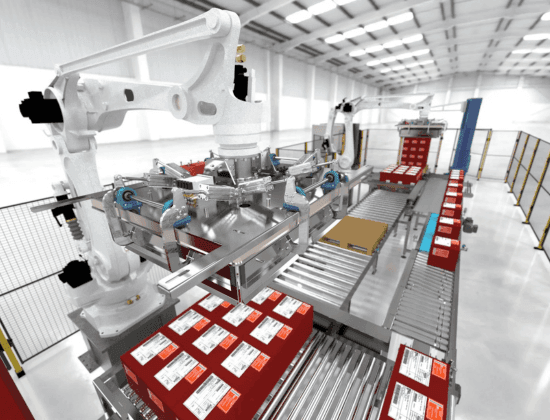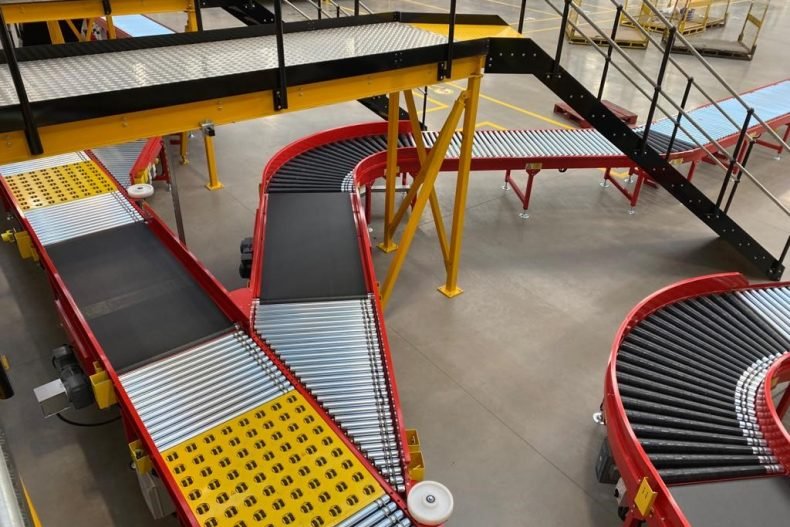As businesses strive to meet growing demands, incorporating cutting-edge technologies like this can provide a significant competitive advantage. This transformative technology not only streamlines warehouse operations but also ensures optimal space utilisation and reduces labour costs. Here’s a step-by-step guide on how to successfully integrate robot palletising into your logistics operation.
So what do businesses looking to implement and embrace robotic palletising need to bear in mind when preparing their logistics operations for the transformative change that Robotic Palletisers can bring to their business? Our team of experts at L-A-C have put together a short list of things to consider.
Step 1: Evaluate Your Current Operations
Before diving into any technological implementation, it’s crucial to conduct a thorough assessment of your current logistics operations. Identify pain points, bottlenecks, and areas where efficiency can be improved. Understanding your specific needs will help you tailor the integration of these robots to address these challenges effectively.
Step 2: Research and Select the Right System
The market offers a range of robotic palletisers, each with its own set of features and capabilities. Research various options to find a system that aligns with your warehouse’s layout, product types, and volume of operations. Consider factors such as payload capacity, stacking patterns, ease of integration, and adaptability to future changes.
Step 3: Collaborate with a Robotics Partner
Partnering with a robotics provider such as L-A-C Logistics Automation is essential for a successful integration. We work closely with your team to discuss your requirements, operational goals, and timeline. A reputable partner will offer expertise in system integration, customization, and ongoing support. Together, we can help design a solution that optimises your warehouse processes.
Step 4: Plan the Layout
Once you’ve selected a robotic palletiser system and a partner, it’s time to plan the layout of the robots within your warehouse. Consider factors like entry and exit points, proximity to conveyor systems, and the placement of storage racks. The goal is to create a seamless flow that ensures efficient movement of products from production to storage and shipping. Our onsite team of experts will be able to assist with this.
Step 5: Adapt Warehouse Infrastructure
Preparing your warehouse for robotic palletisation might require some adjustments to the existing infrastructure. This could involve installing designated loading and unloading stations, integrating conveyor systems, and configuring the software interfaces for seamless communication between the robots and your warehouse management system.
Step 6: Employee Training
While robotic palletisers reduce the need for manual labour in certain tasks, human oversight and collaboration remain vital. Provide training to your staff on how to work alongside the robots safely and effectively. This could include understanding the system’s operation, troubleshooting common issues, and managing exceptions.
Step 7: Test and Fine-Tune
Before fully integrating the system into your operations, conduct thorough testing. Simulate different scenarios to ensure the robots can handle various products, stacking patterns, and volumes. Use this testing phase to fine-tune the system, optimising stacking algorithms and ensuring that the robots are working seamlessly.
Step 8: Monitor and Optimise
Once the system is up and running, continuous monitoring is crucial. Keep track of key performance indicators such as efficiency gains, error rates, and overall productivity. Analyse the data to identify areas for further optimization and enhancement.
Step 9: Scale Gradually
As your team becomes more comfortable with the technology and its benefits become evident, consider scaling up the robotic operations. You can expand the system to cover additional product lines or increase the volume of items being handled. This gradual approach allows your team to adapt to changes smoothly.
Step 10: Stay Updated
The field of robotics is evolving rapidly, and new advancements are continually being made. Stay updated on the latest developments in this technology. Regularly assess your system’s performance and consider upgrades or updates to ensure you’re leveraging the most current capabilities.
Summary
Integrating palletising robots into your logistics operation can elevate your warehouse’s efficiency, accuracy, and overall performance. By following these steps and collaborating with the right robotics partner, you can successfully implement this transformative technology, streamline your operations, and position your business at the forefront of modern logistics.
In conclusion, robotic palletisers stand as a testament to the transformative power of robotics in the logistics and warehouse industry. With its enhanced efficiency, accuracy, labour-saving capabilities, and cost-effectiveness, this technology is revolutionising the way warehouses operate. As the industry continues to evolve, it will play a pivotal role in shaping the future of logistics, making warehouses smarter, more productive, and ultimately, more profitable.
Embracing this innovative technology today is an investment in a seamless, efficient, and competitive future but it is vital to choose a proven partner with a breadth of expertise as logistics integrators.
The team at L-A-C Logistics Automation are well equipped to advise on all aspects of your logistics solution. Our wealth of knowledge is gleaned from years of experience working with some of the most influential companies in warehousing and logistics automation. Get in touch with us to discuss your warehouse logistics needs today!


